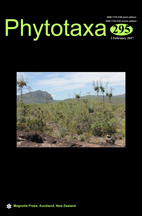Abstract
Hybridization represents an important mechanism in the diversification of Cactaceae where interspecific barriers are poorly developed. Putative hybrids with an intermediate phenotype between the columnar cacti Escontria chiotilla and Polaskia chichipe were observed in Oaxaca, Mexico. The putative hybrids grow sympatrically with their parents, sharing pollinators and overlapping flowering periods. On the basis of morphological, genetic and molecular studies, we show that a gene flow occurs between E. chiotilla and P. chichipe. Morphological and genetic similarities were used to carry out phenetic analyses, which allowed us to separate the two taxa and the potential hybrids, and cluster them into discrete groups with a high degree of consistency. We also generate artificial hybrids by hand-pollination crosses. These hybrids indicate that there are partial pre- and postzygotic barriers between E. chiotilla and P. chichipe. Backcrosses between parents and hybrids produced viable seeds, suggesting that there is a high potential of introgression with both parents. Taken together, we propose that hybrids observed in the field are the product of cross-pollination between E. chiotilla and P. chichipe. Thus, gene flow between both genera can explain why the genetic independence of these taxa has not kept them reproductively isolated. A complete description and illustrations of a new intergeneric hybrid are provided.

